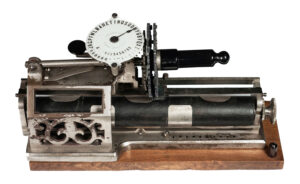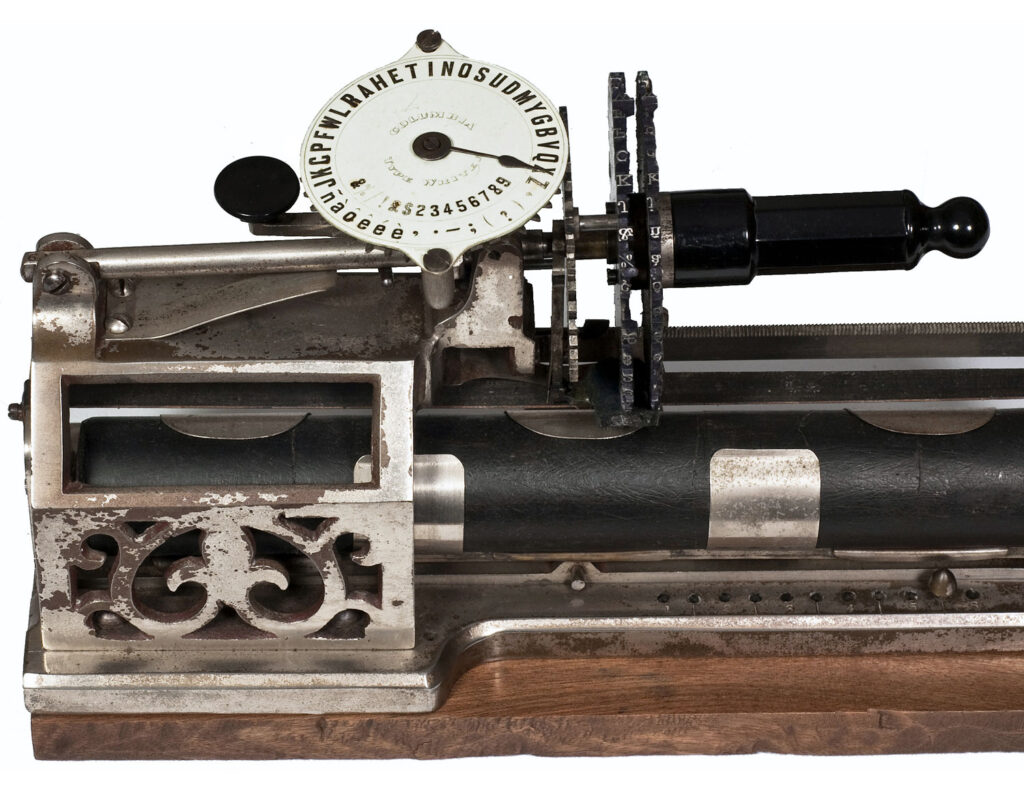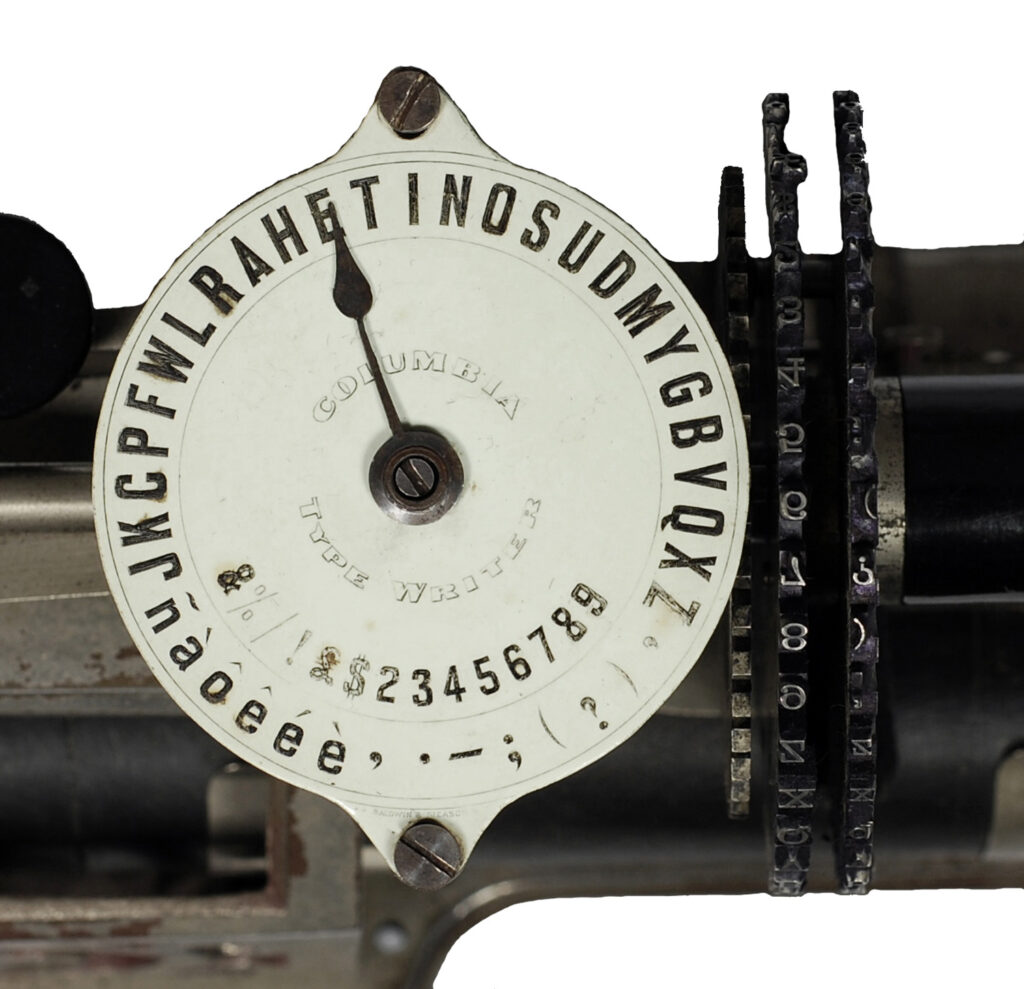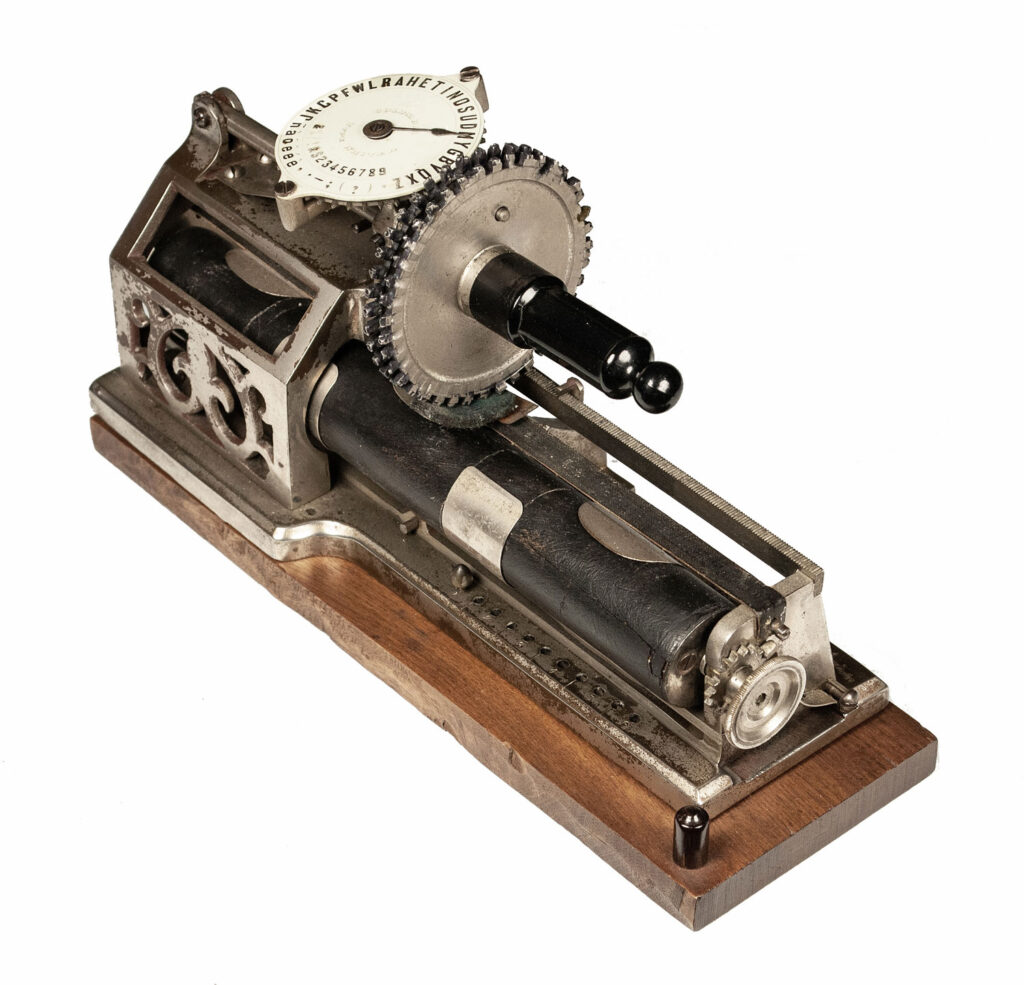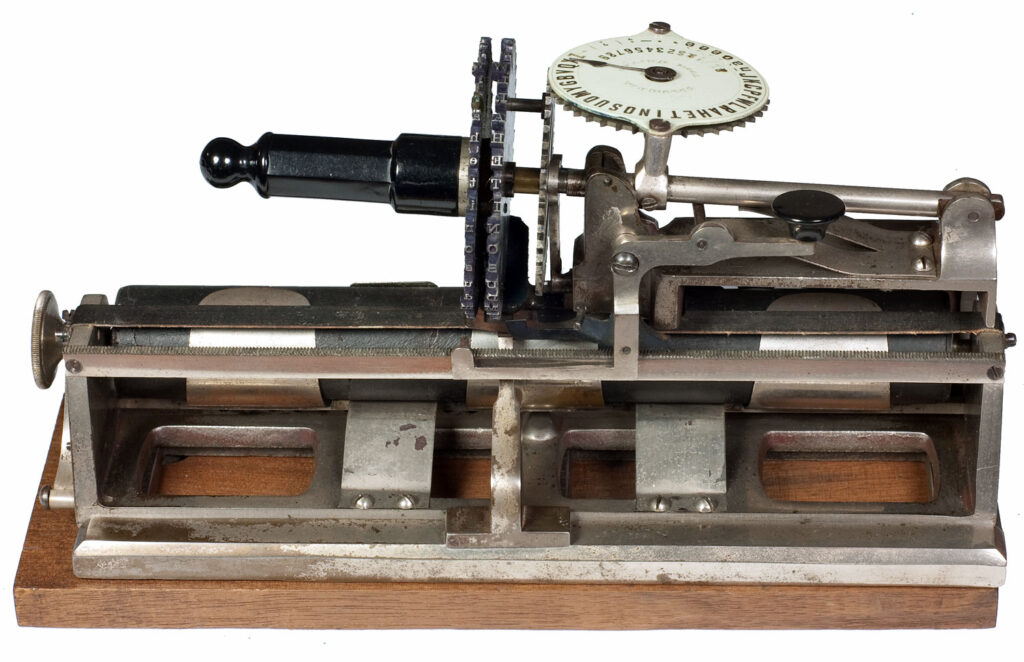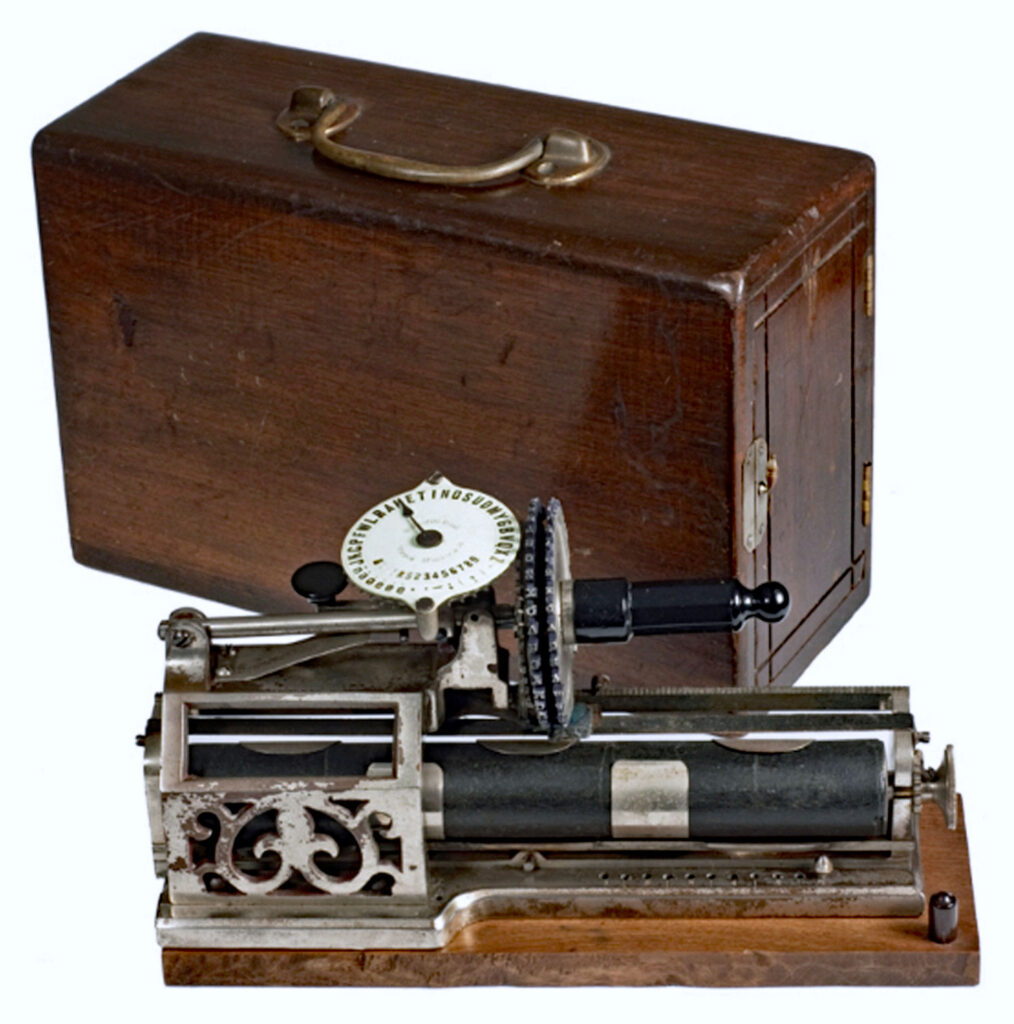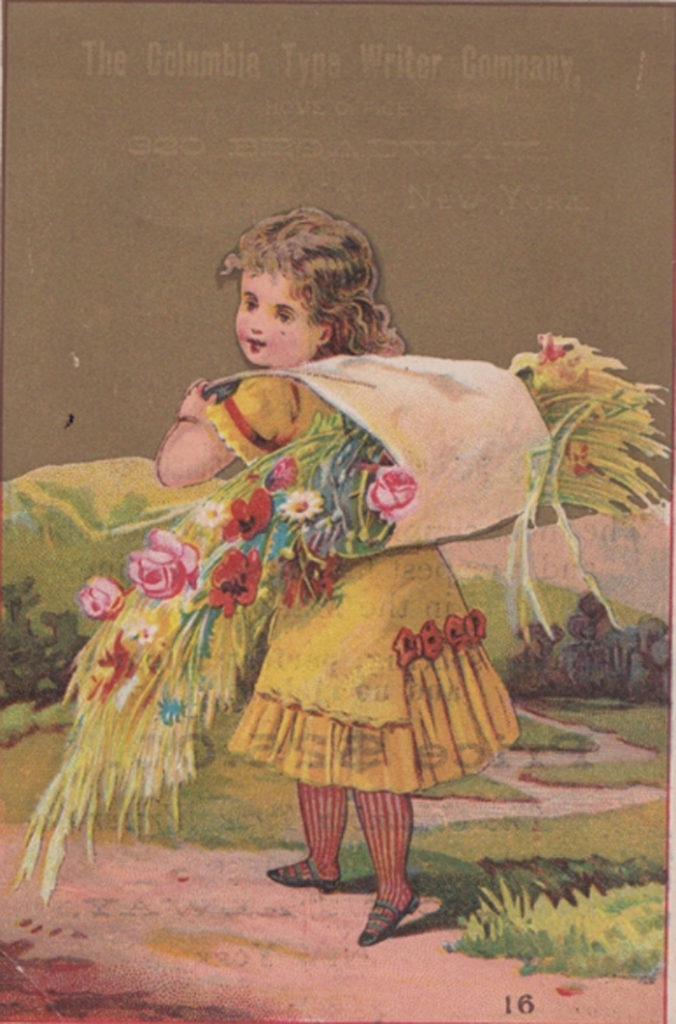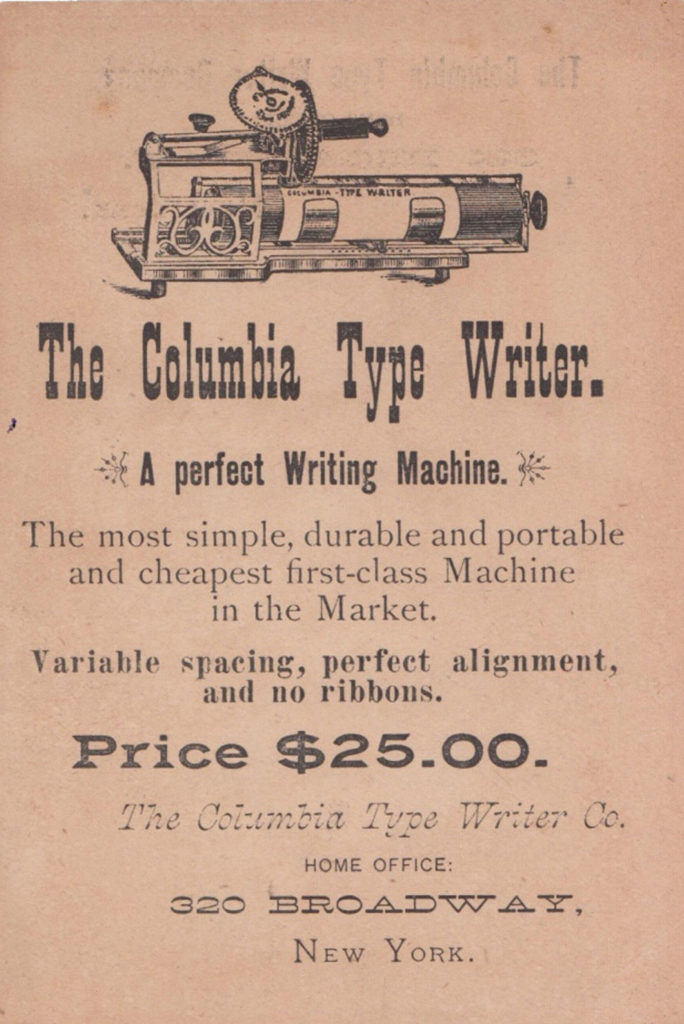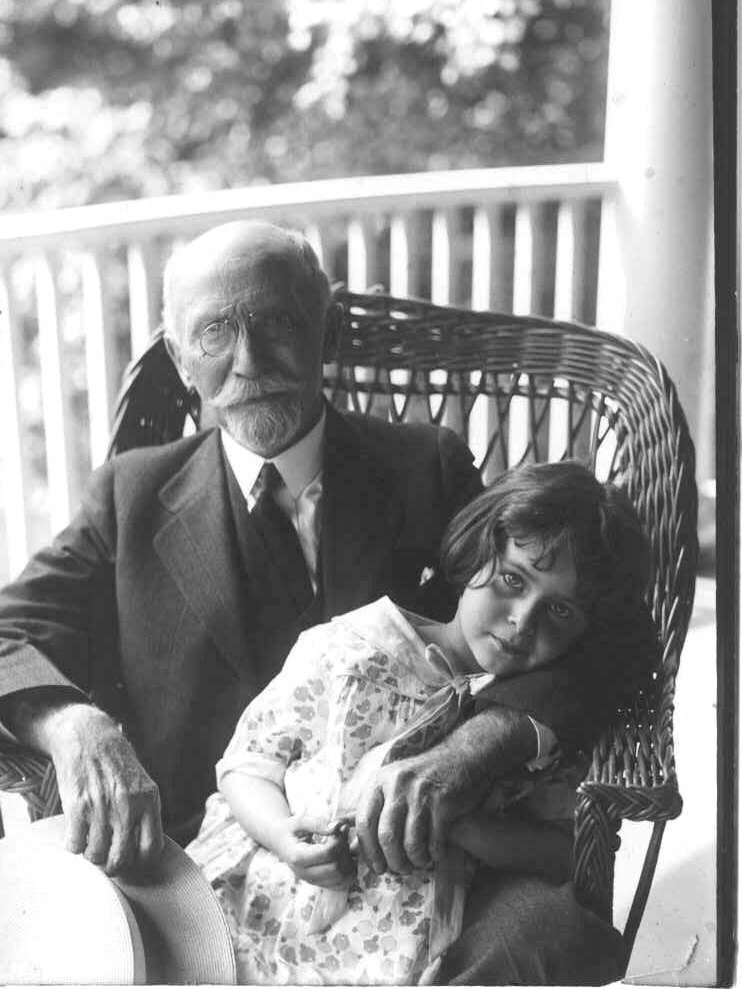Charles Spiro: Reaching Back in Time – An illustrated article
The Columbia 1 typewriter is a beautiful little machine and the first manufactured typewriter by the legendary pioneer Charles Spiro, a New York watchmaker, mechanical inventor, and lawyer, who went on to create other superb machines, including the Columbia 2 and the Bar-Lock.
In the photo below, taken in the early 1930s, Charles Spiro, then in his early 80s, is seen with his granddaughter Vivian on his lap.
Along with the Crandall 1 and the Automatic, the Columbia 1 was one of the first typewriters to offer proportional spacing, with the carriage advancing different amounts based on character width. It was also the second typewriter, after the 1883 Crandall, to feature visible typing, allowing users to see what they had just typed by looking down through the open window above the ornate grille.
The Columbia 1 initially appeared, very briefly, with a single type wheel for capital letters only. It was then produced, again for a short time, with two type wheels, as seen in this example: one for uppercase and the other for lowercase characters. To change case, the black handle is moved laterally to engage the appropriate type wheel. In operation, the black handle is rotated to position the pointer on the desired character, and then pushed down to print.
To begin typing on a new page, a sheet of paper is first fully rolled onto the large wooden roller (platen), then advanced one line at a time during typing.
It’s important to note that the point of printing is not on the platen, as one might assume, but rather at the top of a small metal anvil that rises from the base at the rear of the typewriter. To cushion the impact of the metal type wheel striking the anvil, a leather strip is stretched across the top of the roller, positioned between the anvil and the underside of the paper. The anvil and the leather strip are both visible in the fourth photo below.
It is noteworthy that at the age of 16, Mr. Spiro invented the stem setter and winder for watches while working in his father’s watch shop. Prior to this innovation, watches required separate keys inserted into the front or back for setting and winding. Spiro’s design integrated the key directly into the watch, and he was awarded the substantial sum of $4,000 for the patent.
This typewriter originally sold for $30.
“It is to the Pen, what the Sewing Machine is to the Needle.”
“The most simple, durable and portable and cheapest first-class Machine in the Market. Variable spacing, perfect alignment, and no ribbons.”
